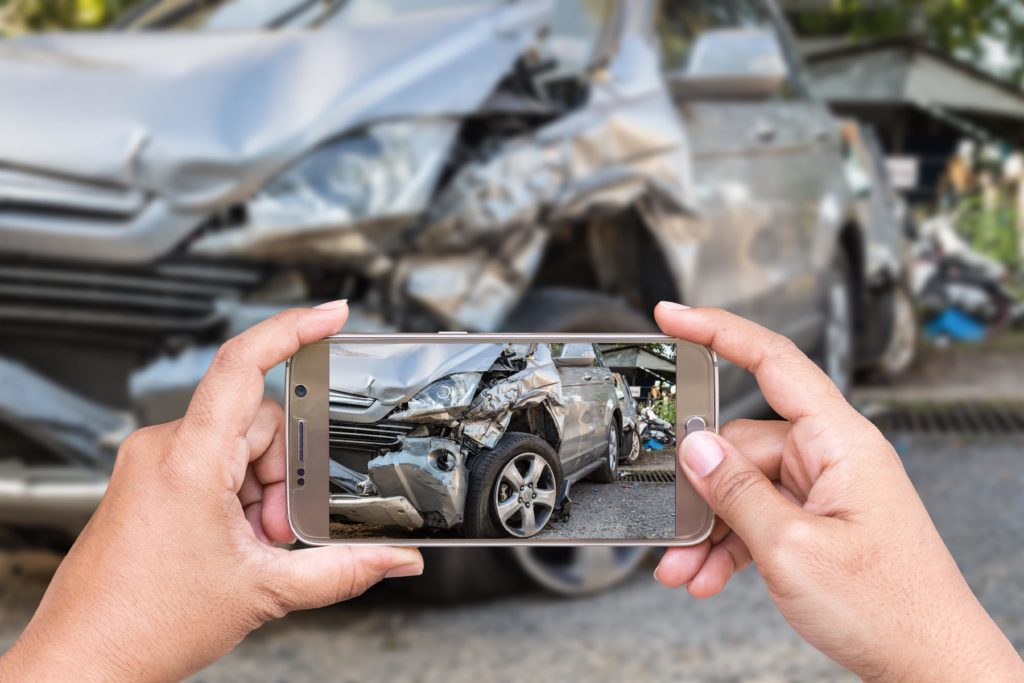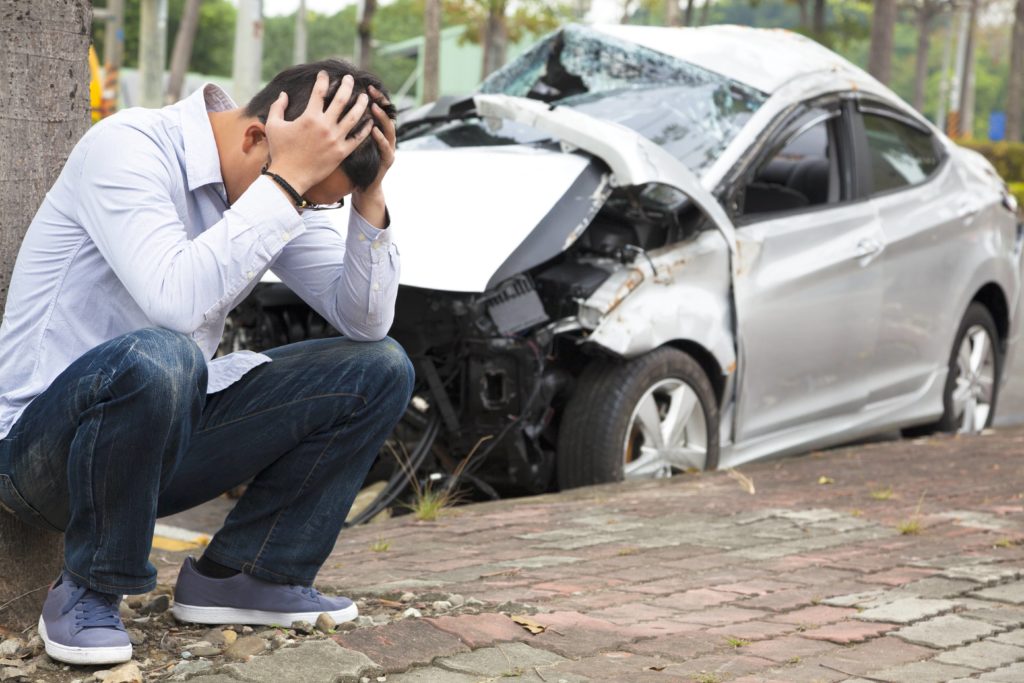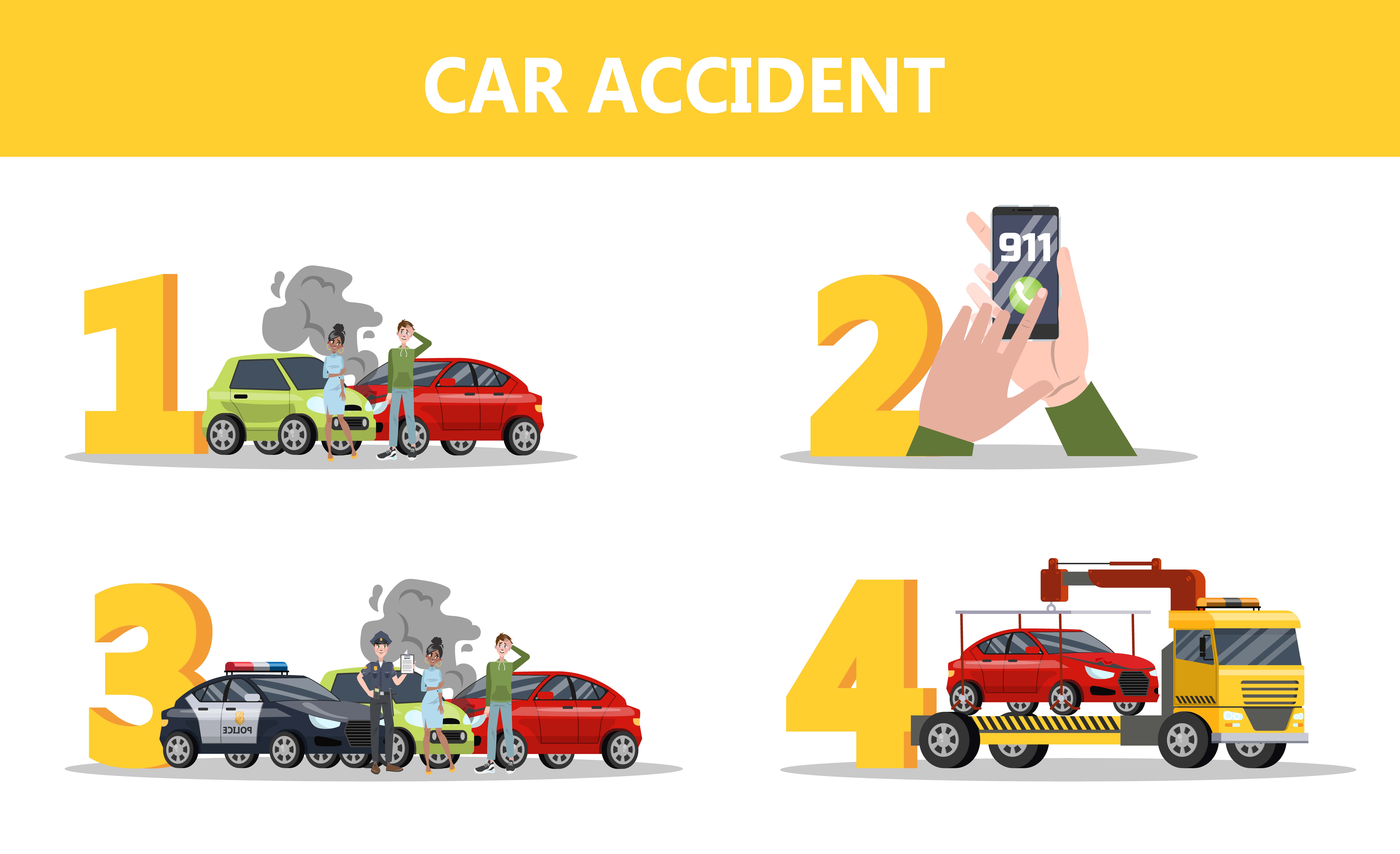No matter how aware you are of other drivers when you’re out in your car, accidents can happen. It can be such an emotional and confusing time, so having a car accident checklist handy ensures that you do everything you need to do to help resolve the situation. Knowing what to do in the event of an accident will improve your chances at recovering damages for any injuries. Additionally, you stand a better chance of settling your claim without any delays or problems.
If you’re not sure exactly what to do in the event of a car accident, this thorough car accident checklist outlines it all for you.
Step 1: Don’t Leave the Scene
If you leave the scene of an accident straight away, you risk getting a hit-and-run charge. Only leave the scene of the accident after law enforcement says it’s okay for you to go. Before you leave, you’ll have to exchange information with the other drivers involved and let medical professionals offer to treat you.
Step 2: Check Yourself and Any Passengers for Injuries
First, check yourself for injuries. If you find that you have them, call 911 or ask someone to call for you if you’re unable to do so. If you have serious injuries, don’t try to move. Instead, wait for emergency personnel to come to the scene to assess you.
If you find that you’re not too hurt to move, check on any passengers in the car. If you see injuries or they tell you they have injuries, get your phone and call emergency services. You can also ask any bystander to call for help if you can’t.

Step 3: Call the Police
If you’ve already called 911, local law enforcement will dispatch an officer to the scene of the accident. Even if there are no apparent injuries, report the accident to the officer. You should notify the police of any car accident you experience, even if it’s a very minor fender bender. The officer will come to the scene and write out a police report, and they’ll speak to everyone involved in the accident. Having a police officer on the scene is also very helpful if it turns out that the other driver doesn’t have car insurance or if they’re under the influence of drugs or alcohol.
Step 4: Move the Vehicles to Safety
You should try to get all of the vehicles out of the direct line of traffic and off to the side of the road if there are no serious injuries to worry about. Moving the vehicles can help prevent further accidents. It reduces the chances of a larger traffic jam building up. This also keeps the path clear for any first responders to get directly to the people involved and check them over for injuries or to begin the extraction process if they’re stuck in the car.
Step 5: Turn Off the Car’s Engine
If you can move your cars to safety, do so and then switch off the engine. Turn your car’s hazard lights on and put out any road flares if you have them in an emergency kit. These flares are great for warning any other drivers that they should slow down and proceed carefully around the accident scene.
Step 6: Obtain Personal and Insurance Information
Locate and identify any other drivers involved in the accident. You want to get the driver’s full name, phone number, license number, license plate number, insurance company name, insurance policy number, accident location, and the model, year, and make of the other car or cars involved. If there are more than one car and one driver, make sure to get all of this information from each driver.
If there are witnesses to the accident, try to get their full names and phone numbers. These witnesses may be able to recall any part of the accident or any actions the other driver took. Your attorney or insurance company might want the witness information to confirm your account of the accident.
Step 7: Take Videos or Photos of the Accident Scene
You want to protect yourself during and after an accident, so make a point to identify the responding officers. Ask the officer where you can get a copy of the accident report because your insurer may want it when you file your car insurance claim.
Start taking pictures or videos of the accident. Take pictures of your vehicle from different angles, and you want to show the damage both cars have. It’s also a good idea to take a picture or video of the other car’s license plate number. You could show these pictures to your insurer during the claims process.
You should also have detailed notes or videos stating the time and date of the accident, along with an address or approximate address. Note the road name and the nearest cross street. Which direction were you traveling in and what direction was the other car traveling in? If possible, sketch a rough diagram of the crash scene, and note any damage to the surrounding areas.
Write out your account of what happened as soon as you can. It’s easy to forget important details when emotions run high, so recording yourself telling the event can help. Finally, make a note of the visibility, the weather, and other driving conditions at the time of the accident.
Step 8: Limit What You Say to the Other Party
No matter how you feel or who you believe caused the accident, be careful about what you say when you’re around the other party or on the scene of the accident. Never admit fault to the other driver. Even if you believe or know the accident was your fault, facts may come to light later that disprove this belief. But, if you admit to liability now, this can hurt you later on.
Never lie, especially when it comes to talking to the officers on the scene and giving them your statement. Don’t make any promises to the other driver, especially regarding insurance companies or police involvement. Instead, wait for the officer to come and ask to speak with you away from the other party.
Step 9: Notify Your Insurance Company of the Accident
Call your insurance company’s emergency claims number or your agent right away. If you can safely do so from the scene of the accident, this can be even more useful. Contacting them from the scene allows the agent time to talk to the responding officer. The officer might be able to give the agent more accurate information than you can because you’re upset from the accident.
The person you speak to from the emergency line or your insurance agent will be able to walk you through how to file a claim for your accident. If you have an app for your insurance company, you have the option of starting a claim right from your phone.
Regardless of how you decide to file a claim, your auto insurance policy requires you to report an accident promptly. If you fail to do so in a timely manner, your insurance company could jeopardize your coverage moving forward. This could impact any payouts you have for this claim as well.
You should also note that reporting an accident to your insurance company doesn’t mean you have to file a claim. Talking to your agent can help you understand the advantages and disadvantages of filing and whether or not it could impact your premiums.

Step 10: Cooperate with Your Insurance Company Through the Claims Process
To make the claims process as easy as possible, plan to cooperate with your insurer. This includes the accident investigation. You should answer any questions they have and provide them with any evidence they ask for promptly. However, if you feel like your insurance company denied your claim wrongfully, you should consider getting in touch with your attorney. You’ll still have to answer the questions the insurance company asks, but your attorney will make sure you don’t accidentally say something that leads to bigger issues down the road.
Step 11: Keep Organized and Careful Records
If the accident results in vehicle repairs or medical treatment, keep organized and thorough records. Even if you don’t plan on filing a claim, having good records can help protect you if that need changes. These records are vital for proving the damages to the car, any passengers, and yourself. You’ll want the police report and any medical records, including follow-up clinic visits.
If your claims process drags on or gets extremely complicated, it’s a good idea to make a note of every change so you have a paper trail. Make notes of anyone you talk to throughout the claims process and what each person says. Do not delete any text messages or emails you exchange with anyone concerning the accident.
How to Be Prepared in the Event of a Car Accident
No one wants to get in an accident. However, being prepared before you do will ensure that you have the correct documentation on hand and ready to go. Remember, an accident is a highly emotional time and you may not be able to think straight at the accident scene. Carrying the following items in your car at all times can help you avoid any additional stress or penalties.
- A copy of the car accident checklist in your glove box
- Your registration, insurance card, and driver’s license in your vehicle at all times
- A stocked safety kit with road flares and first-aid supplies
Ideally, you’ll keep all of these items safely together in an envelope in your glove box. This way, you don’t have to spend a lot of time trying to dig them out when you’re at the accident scene. Storing them here also reduces the chances of losing them from the impact. Knowing where they are can help remove some of the stressors if you have everything ready to go.
Key Tips to Remember
During a car accident, your job is to collect the facts while avoiding getting involved in further discussion about the accident itself. If the other party suggests you handle things without insurance or admit fault, collect their necessary information while not admitting to anything. You need to get the information you need to report the accident, especially since several states have legal obligations regarding crash reports.
It’s possible to contact your state insurance commissioner or your insurance company agent to ask them about the specific laws surrounding reporting crashes in your state before you get in an accident. It’s important to remember that you don’t know the person involved in the accident with you, and that you have no idea what type of insurance they have or any of their details. So stick to the facts to help protect yourself and to make sure that there are no problems with your claim.
Finally, it’s always a good idea to consult a lawyer before you sign anything if you were in a serious accident that involved vehicle damage or serious injuries. This is especially true if the paperwork involves the other driver’s insurance company or attorney. Your lawyer will be able to look it over and point out potential problems while working to fix them.
Contact Quirk Reed LLP for Help with Your Car Accident Claim
If you’ve recently had a car accident and you’d like an experienced and professional attorney to help ensure you get your claim filed and paid correctly, contact us. Our attorneys are well-versed in all areas of traffic law and are ready to help walk you through your car accident checklist, look at the facts, and advise you on the best course of action you can take to avoid making any costly mistakes. We’ll walk you through every step of the process from the initial claim to the payout.

